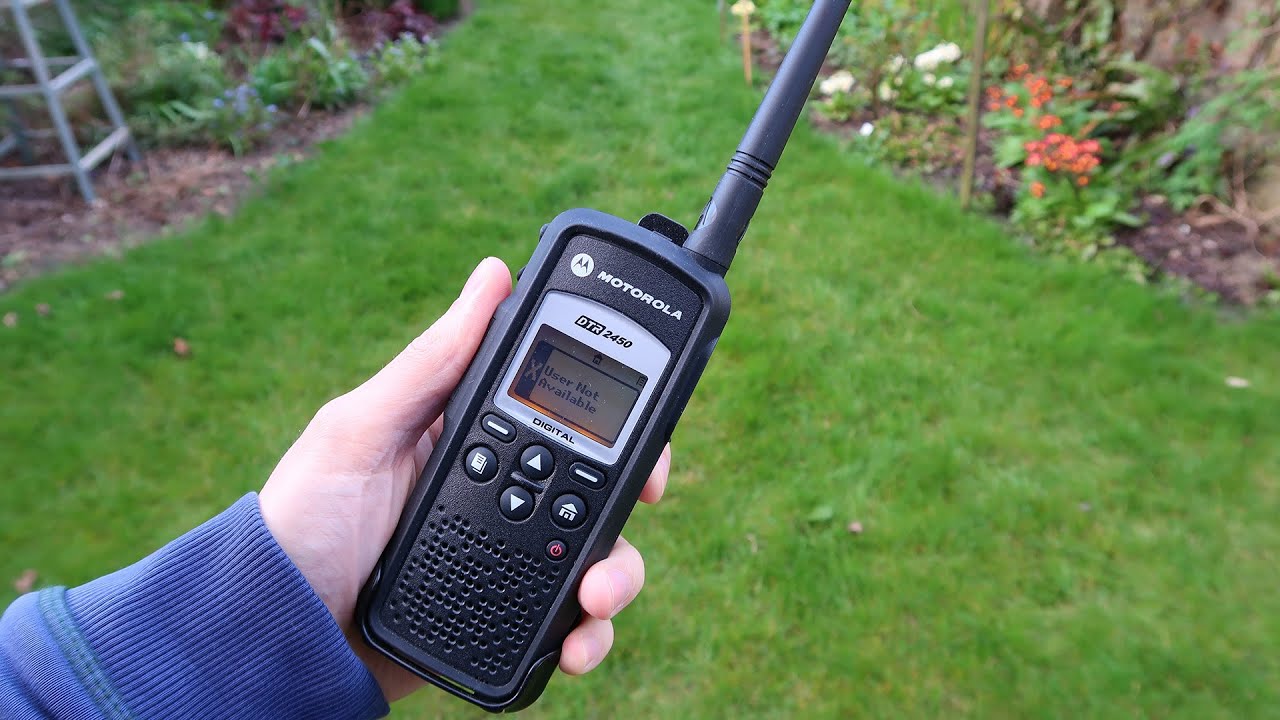Does anyone have experience with how they compare to their one-watt 900MHz HTs? How do they compare in thirty-floor buildings, shopping malls, cruise ships with many decks, and absolute range across the Grand Canyon or rooftop to rooftop? What about fancy operational bells and whistles?
Your best best would be to talk to a dealer who has experience with using them the way they were intended. You are talking about many different scenerios and no one radio would be great in all those cases. If you are concerned about range I wouldn’t even bother with the 100mw version.
The 2.4GHz radios are for the UK market. The 900 MHz DTR and DLR radios are for the North America market.
I believe the 2.4 GHz radios have been discontinued, but you can still find a few used ones for sale in the UK. They would not be legal to use in North America.
As to comparing the two models, I doubt anyone has done a direct comparison.
If you are in the UK, it appears based on range tests that the range is similar to the 1 watt 900 MHz radios.
If you are in North America, based on my own back-to-back range tests, the 900 MHz radios have about the longest range one can expect with a handheld UHF radio. Plus, at the farthest end of their range, they still sound 100% clear. Once they go beyond their range, they do not transmit at all, as opposed to analog radios where you might get some scratchy signal fading in and out a bit.
Folks who have used them on cruise ships where allowed, have reported that they are the only UHF radio that can penetrate to almost every deck on board a ship. They far exceed the performance of most analog radios.
No two way radio can refute the laws of physics. In an urban environment, you would be lucky to get eight blocks. In wide open terrain with no hills or obstructions in between, you are still limited by the curvature of the horizon. You might get a few miles.
Don’t worry too much about power. The 1 watt in the 900 MHz band is plenty, and would compare to an 8 watt in the 400 MHz band. 100 mW in the 2.4 GHz band is, again, plenty. Range is more dependant on quality of the receiver and antenna combination than ultimate power.
I did not realize that they were only authorized for business use in the UK (that is the video that perked my ears up), but would they be legal for use in the 13cm ham band on this side of the pond, or is their hopping around the band too much like scrambling?
Motorola uses their own proprietary frequency-hopping algorithms and cannot be programmed for any other frequency or band. That’s what makes them so private. No one can monitor a conversation on a Motorola DTR or DLR unless they have a Motorola DTR/DLR radio, and even then it would be virtually impossible with almost 100,000 channel and ID combinations to choose from.
The downside is of course that they can only communicate with DTR/DLR radios and cannot integrate with any other radio on the market.
The UK 2.4GHz band is not exclusively for business, it is simply a low power devices section of the spectrum. On the ship front, remember that 2.4GHz is a very densly populated band, and it’s not just wifi, it’s radio mics, in ear receivers, DMX lighting and data links between show sound and lighting. Some parts of ships are full of these kinds of kit, so you may find trying to use this band a bit unreliable.
It is definitely untrue that the Motorola DTRs have perfect clarity until the edge of their range. At the edge of their range, packets do drop, speech becomes slightly garbled, and it is definitely audible.
The difference is that there is no noise intrusion on the received signal, but the speech quality does start to degrade at the edges of receive range.
I don’t want people to think that there is some kind of “all or nothing” thing going on with these radios. They are excellent but are not magic.
My experience is with the 900 MHz DTR550 radios and not the 2.4 GHz UK models.
We were doing range tests yesterday and they were right at the edge of reception, to the point that they klunked when held at face level, and chirped when I raised my arm higher. 100% as clear at max range as they were a foot away. No packet drops that I could discern, and if there were any, the DTRs seem to do a good job of filling in the digital gaps.
(For those not familiar with them, they send out a digital ‘handshake signal’ to ensure another radio was within range. They reply with a quick “chirp” sound when within range and a “kluuunk” sound if no radio on your ‘channel’ and with the same ID number is not within range. At the outer edges - for us, it was about 2 to 3 miles in an urban environment when both are inside vehicles - if you get a klunk signal, try raising the antenna above your head, and it may restore a signal.)
I also know based on my experience with them that they penetrate very well through buildings and vehicles, even with lots of glass and steel. An external mobile antenna for the 900 MHz DTR radios is a waste of money and only serves to degrade the signal. In all my testing over the years, I have found the cable loss easily exceeds the tiny bit of gain from an external antenna.
